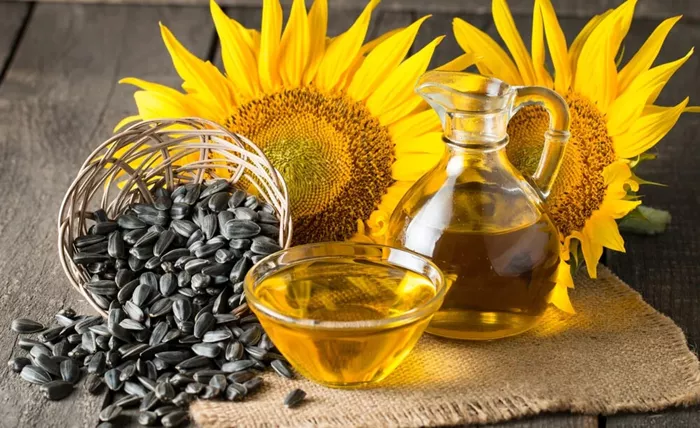Sunflowers are beloved for their vibrant yellow petals and towering presence in gardens. But have you ever wondered where sunflower seeds come from? Sunflowers have a rich history that stretches back thousands of years. Their origins trace back to the Americas, where they were first cultivated by indigenous people. Over time, sunflowers spread to various parts of the world, becoming one of the most popular flowers. In this article, we will explore the fascinating history and journey of sunflower seeds, from their beginnings in North America to their widespread cultivation today.
Origins of Sunflower Seeds: A Journey Through Time
The Birthplace of Sunflowers
The story of sunflower seeds begins in the Americas. Native to North America, sunflowers were first domesticated by the indigenous peoples around 1000 BCE. These early cultivators recognized the value of the sunflower plant for its edible seeds, oil, and medicinal properties. The first sunflowers were not as large and vibrant as the ones we see today; they were smaller, wild varieties. However, over centuries, these plants were selectively bred for their size, beauty, and seed production.
Native American Uses of Sunflowers
Before European settlers arrived, Native American tribes used sunflowers for various purposes. The seeds were ground into flour, used for cooking, or pressed to extract sunflower oil. This oil was used not only for cooking but also for medicinal purposes, such as soothing sore muscles and promoting skin health. The sunflower was also important in spiritual rituals and as a source of fiber for making ropes and textiles.
Spread of Sunflowers to Europe
In the 16th century, when European explorers like Christopher Columbus arrived in the Americas, they encountered sunflowers. Fascinated by their beauty and usefulness, sunflowers were brought back to Europe. By the 18th century, sunflowers became popular in European gardens. Their seeds were admired for their potential as a food source, and soon, sunflower oil became a staple in many European kitchens.
The Role of Sunflowers in Agriculture
As sunflowers gained popularity in Europe, they quickly became part of agricultural practices. The plants were grown not only for their seeds but also for their role in crop rotation. Sunflowers were used to improve soil health by replenishing nutrients, which made them valuable to farmers. Over time, different sunflower varieties were developed, suited to various climates and soil types, making them a versatile crop.
The Spread of Sunflowers Globally
Introduction to Russia and Eastern Europe
By the 19th century, sunflowers had found their way to Russia, where they were cultivated extensively. The country became one of the largest producers of sunflower seeds in the world. Russian farmers discovered that sunflower seeds were not only nutritious but could also be used to produce oil. This marked the beginning of the sunflower oil industry, which would grow exponentially in the following decades.
The Rise of Sunflower Oil
Sunflower oil quickly became a popular cooking oil due to its light flavor and high smoke point. It was healthier than many animal fats and vegetable oils, which led to its widespread use. The oil’s versatility made it a key ingredient in various foods, from salad dressings to cooking oils. Today, sunflower oil is one of the most commonly used oils worldwide, particularly in Europe and the United States.
Sunflowers in Modern-Day Gardening
Today, sunflowers are grown across the globe, with sunflower seeds being a common snack, and the plants themselves being popular in gardens. The seeds are harvested and consumed in various ways, from roasted seeds to sunflower butter. The cultivation of sunflowers has evolved, with new hybrids developed for ornamental purposes and improved seed production. Modern gardeners enjoy the bright yellow blooms of sunflowers, while farmers continue to reap the benefits of this versatile plant.
Why Are Sunflowers So Popular Worldwide?
Beauty and Functionality
Sunflowers are admired not only for their size and vibrant color but also for their ability to serve multiple purposes. Whether grown for ornamental beauty, food, or oil production, sunflowers are a practical and stunning addition to any garden. Their ability to thrive in a wide range of environments makes them a favorite among gardeners in both rural and urban settings.
Health Benefits of Sunflower Seeds
Sunflower seeds are rich in nutrients, making them a healthy snack. They are an excellent source of vitamin E, magnesium, and healthy fats. These seeds are also high in protein, making them an excellent plant-based alternative to animal protein. The seeds’ antioxidants help to reduce inflammation and promote heart health, which contributes to their popularity as a health-conscious snack.
Sunflowers as a Symbol of Joy and Positivity
Beyond their practical uses, sunflowers have come to symbolize happiness, positivity, and warmth. Their bright yellow petals are associated with the sun, and they are often seen as a symbol of hope and good fortune. In many cultures, sunflowers are given as gifts to convey well-wishes or as a gesture of goodwill.
Conclusion
The journey of sunflower seeds from their origins in North America to their global spread is a testament to the plant’s versatility and value. From indigenous use to global cultivation, sunflowers have become an integral part of agriculture, gardening, and cuisine worldwide. Whether for their beauty, seeds, or oil, sunflowers continue to be a cherished flower. Their enduring legacy ensures that sunflowers will remain a beloved symbol of nature’s bounty for generations to come.


